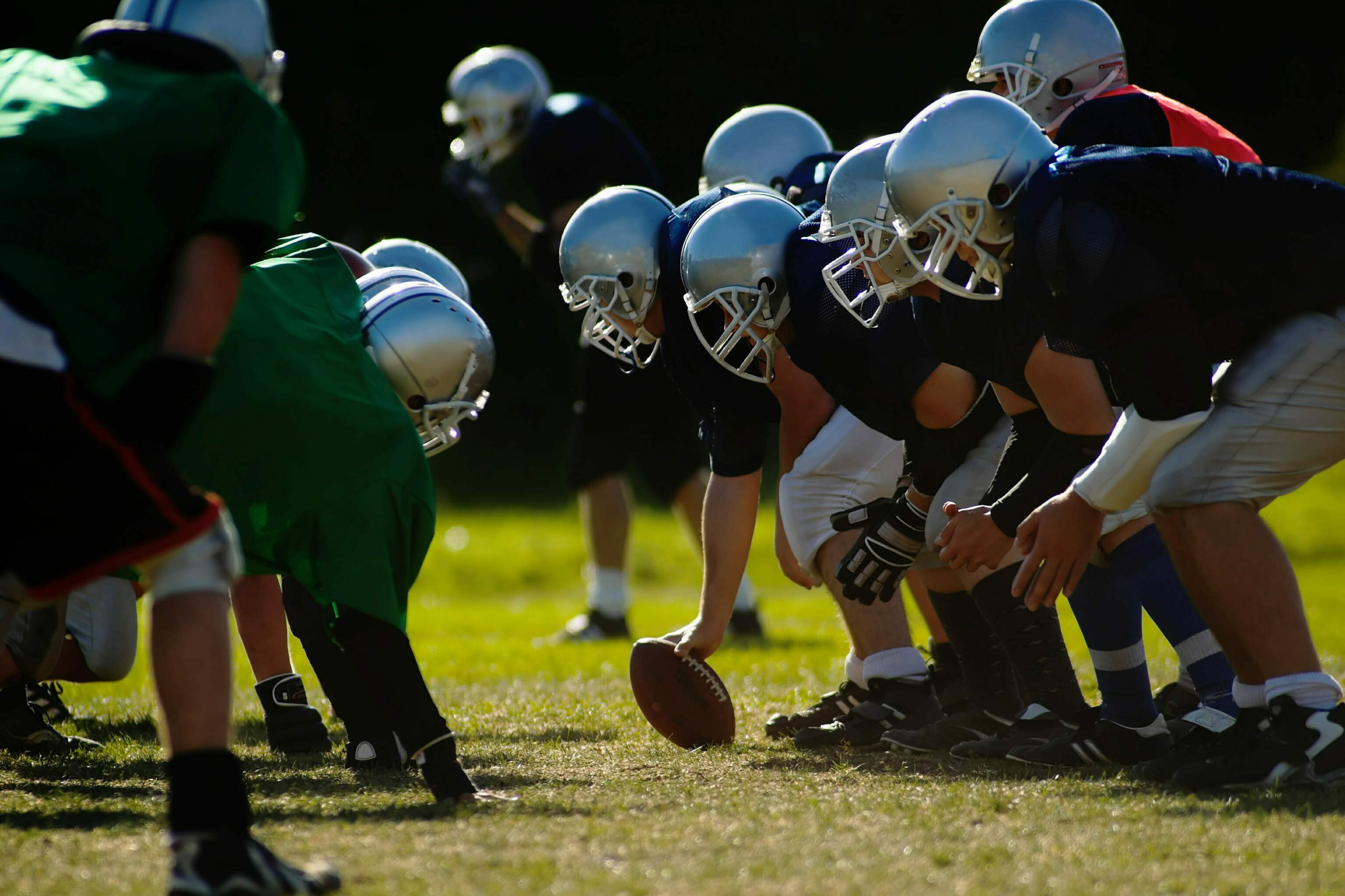[cs_content][cs_section parallax=”false” separator_top_type=”none” separator_top_height=”50px” separator_top_angle_point=”50″ separator_bottom_type=”none” separator_bottom_height=”50px” separator_bottom_angle_point=”50″ style=”margin: 0px;padding: 45px 0px;”][cs_row inner_container=”true” marginless_columns=”false” style=”margin: 0px auto;padding: 0px;”][cs_column fade=”false” fade_animation=”in” fade_animation_offset=”45px” fade_duration=”750″ type=”1/1″ style=”padding: 0px;”][x_custom_headline level=”h2″ looks_like=”h3″ accent=”false”]What is a Concussion?[/x_custom_headline][cs_text]A concussion is a mild traumatic brain injury caused by a direct blow to the head, or any other contact that causes the brain to collide with the skull. Brain damage can occur from both a single event or cumulative trauma–when “smaller” injuries add up to overall damage to the brain.
Though there may be outward signs like bruising or lacerations in certain cases, it is just as likely to have no visual signs of injury. The effects of a concussion can be emotional, physical, or cognitive. Knowing the symptoms becomes the most important way to recognize a concussion and to get appropriate help.[/cs_text][x_custom_headline level=”h2″ looks_like=”h3″ accent=”false”]Rate in Student Athletes[/x_custom_headline][cs_text]There are approximately 300,000 sports-related concussions in the United States each year. Football accounts for 65% of all reported cases. However no contact sport, or gender, is free from risk. The concussion rate for girls is actually higher than boys in gender-comparable sports. Female athletes also tend to recover from concussion at a slower rate than male athletes.[/cs_text][x_custom_headline level=”h2″ looks_like=”h3″ accent=”false”]Prevention[/x_custom_headline][cs_text]The goal of concussion prevention is to introduce safer skill sets to student athletes and find quick, proper treatment when injury occurs. Encouraging safer technique does not mean reduced performance. In fact improved athletic form promotes more effective athletic performance, as well as prolonging the career of the student athlete. The Sports-Injury Prevention Program at Balance Health teaches individuals and teams effective movement to reduce concussion risk as well as other common sport-related injuries. For more information, you can get in touch with one of our physical therapists.[/cs_text][x_custom_headline level=”h2″ looks_like=”h3″ accent=”false”]Signs to Watch[/x_custom_headline][cs_text]The signs of a concussion usually appear within minutes of an injury, though some symptoms may take a few hours to develop. An athlete who has lost consciousness from an impact should always be examined for a brain or spinal injury. The most common complaint is a headache. Athletes that have suffered a concussion can show any of the following signs:
[/cs_text][/cs_column][/cs_row][cs_row inner_container=”true” marginless_columns=”false” style=”margin: 0px auto;padding: 0px;”][cs_column fade=”false” fade_animation=”in” fade_animation_offset=”45px” fade_duration=”750″ type=”1/2″ style=”padding: 0px;”][cs_icon_list][cs_icon_list_item title=”Loss of Consciousness” type=”circle-thin” link_enabled=”false” link_url=”#” link_new_tab=”false”]Loss of Consciousness[/cs_icon_list_item][cs_icon_list_item title=”Headache” type=”circle-thin” link_enabled=”false” link_url=”#” link_new_tab=”false”]Headache[/cs_icon_list_item][cs_icon_list_item title=”Difficulty with Memory” type=”circle-thin” link_enabled=”false” link_url=”#” link_new_tab=”false”]Difficulty with Memory[/cs_icon_list_item][cs_icon_list_item title=”Feeling "out of it"” type=”circle-thin” link_enabled=”false” link_url=”#” link_new_tab=”false”]Feeling “out of it”[/cs_icon_list_item][cs_icon_list_item title=”Slurred Speech” type=”circle-thin” link_enabled=”false” link_url=”#” link_new_tab=”false”]Slurred Speech[/cs_icon_list_item][cs_icon_list_item title=”Excessive Drowsiness” type=”circle-thin” link_enabled=”false” link_url=”#” link_new_tab=”false”]Excessive Drowsiness[/cs_icon_list_item][cs_icon_list_item title=”Difficulty falling asleep” type=”circle-thin” link_enabled=”false” link_url=”#” link_new_tab=”false”]Difficulty falling asleep[/cs_icon_list_item][/cs_icon_list][/cs_column][cs_column fade=”false” fade_animation=”in” fade_animation_offset=”45px” fade_duration=”750″ type=”1/2″ style=”padding: 0px;”][cs_icon_list][cs_icon_list_item title=”Behavioural Changes (anger, depression, irritability, etc.)” type=”circle-thin” link_enabled=”false” link_url=”#” link_new_tab=”false”]Behavioural Changes (anger, depression, irritability, etc.)[/cs_icon_list_item][cs_icon_list_item title=”Exaggerated Emotions” type=”circle-thin” link_enabled=”false” link_url=”#” link_new_tab=”false”]Exaggerated Emotions[/cs_icon_list_item][cs_icon_list_item title=”Nausea or Vomiting” type=”circle-thin” link_enabled=”false” link_url=”#” link_new_tab=”false”]Nausea or Vomiting[/cs_icon_list_item][cs_icon_list_item title=”Difficulty with Balance” type=”circle-thin” link_enabled=”false” link_url=”#” link_new_tab=”false”]Difficulty with Balance[/cs_icon_list_item][cs_icon_list_item title=”Enlarged or different-sized pupils” type=”circle-thin” link_enabled=”false” link_url=”#” link_new_tab=”false”]Enlarged or different-sized pupils[/cs_icon_list_item][cs_icon_list_item title=”Blurred or Double Vision” type=”circle-thin” link_enabled=”false” link_url=”#” link_new_tab=”false”]Blurred or Double Vision[/cs_icon_list_item][/cs_icon_list][/cs_column][/cs_row][/cs_section][cs_section parallax=”false” separator_top_type=”none” separator_top_height=”50px” separator_top_angle_point=”50″ separator_bottom_type=”none” separator_bottom_height=”50px” separator_bottom_angle_point=”50″ style=”margin: 0px;padding: 45px 0px;”][cs_row inner_container=”true” marginless_columns=”false” style=”margin: 0px auto;padding: 0px;”][cs_column fade=”false” fade_animation=”in” fade_animation_offset=”45px” fade_duration=”750″ type=”1/1″ style=”padding: 0px;”][x_custom_headline level=”h3″ looks_like=”h4″ accent=”false”]See Also:[/x_custom_headline][cs_text]‘Head in the Game’ Series”
Pitcher’s Elbow in Young Athletes[/cs_text][/cs_column][/cs_row][/cs_section][/cs_content]
Balance Health Center is dedicated to keeping our members Active for a Lifetime™. Classes designed for all ages and abilities. All fitness activities are reviewed for results by our award-winning Physical Therapy team.


